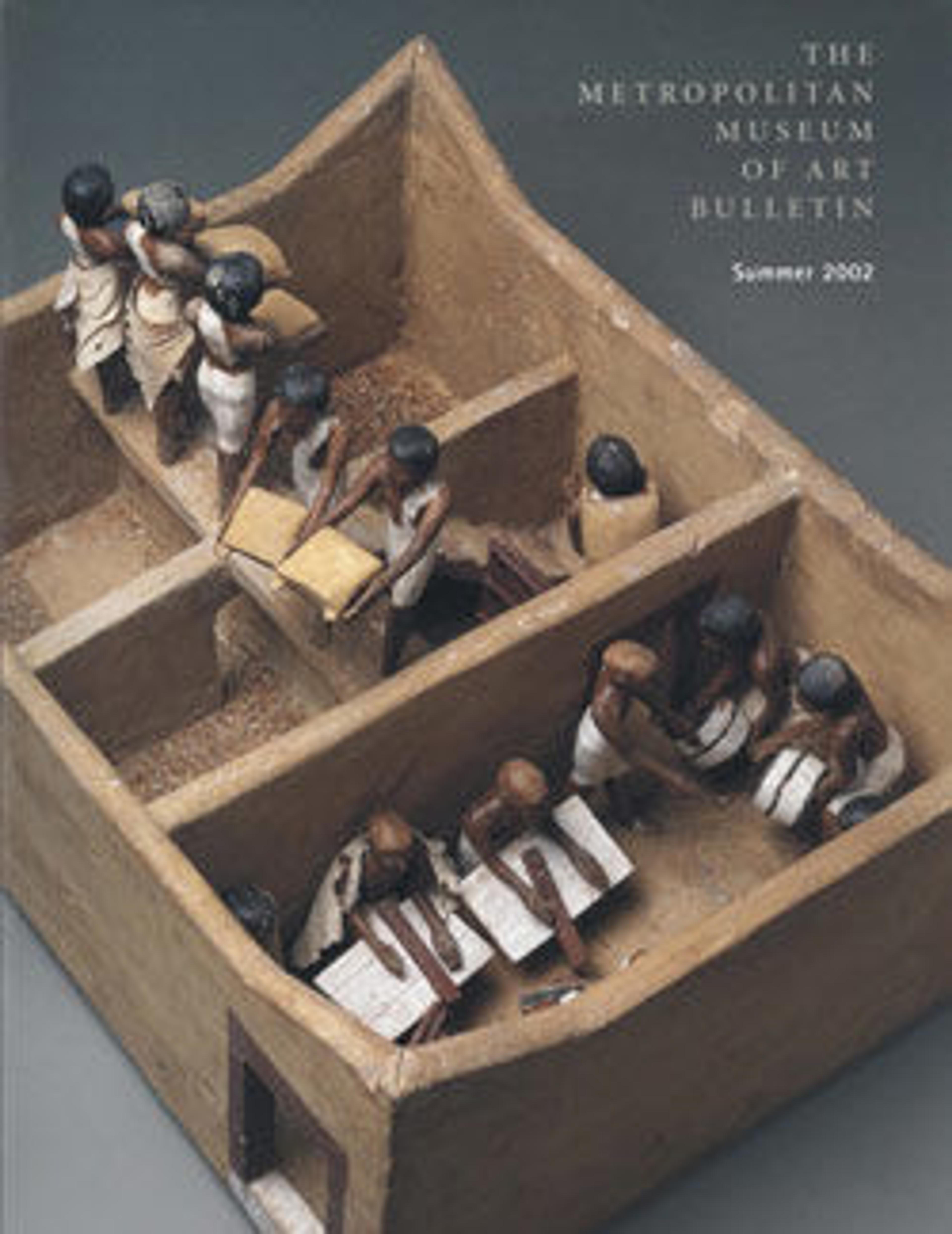Palette inscribed for Smendes (II), High Priest of Amun
The standard scribe’s palette combined a holder for reed brushes with recesses for red and black ink cakes. This example is unique in that it also has a scale painted on its side. According to Egyptologist William C. Hayes this was used by scribes to enlarge or reduce designs proportionally at a ratio of 1:6.
On the underside is a hieratic inscription naming Smendes (II), who was High Priest of Amun and general of the army. The palette was found at Thebes together with tweezers (47.123h) that may have been used to manipulate the ink cakes, and a calendar of lucky and unlucky days which is in the Egyptian Museum, Cairo (JE 86637).
On the underside is a hieratic inscription naming Smendes (II), who was High Priest of Amun and general of the army. The palette was found at Thebes together with tweezers (47.123h) that may have been used to manipulate the ink cakes, and a calendar of lucky and unlucky days which is in the Egyptian Museum, Cairo (JE 86637).
Artwork Details
- Title: Palette inscribed for Smendes (II), High Priest of Amun
- Period: Third Intermediate Period
- Dynasty: Dynasty 21
- Reign: reign of High Priest of Amun Menkheperre
- Date: ca. 1045–992 B.C.
- Geography: From Egypt; Probably from Upper Egypt, Thebes
- Medium: Wood, ink, reed
- Dimensions: Palette: L. 48.6 cm (19 1/8 in.); W. 7.2 cm (2 13/16 in.); Th. 1.1 cm (7/16 in.); Pens: L. 16.5–18 cm (6 1/2 in–7 1/16 in.)
- Credit Line: Harris Brisbane Dick Fund, 1947
- Object Number: 47.123a–g
- Curatorial Department: Egyptian Art
More Artwork
Research Resources
The Met provides unparalleled resources for research and welcomes an international community of students and scholars. The Met's Open Access API is where creators and researchers can connect to the The Met collection. Open Access data and public domain images are available for unrestricted commercial and noncommercial use without permission or fee.
To request images under copyright and other restrictions, please use this Image Request form.
Feedback
We continue to research and examine historical and cultural context for objects in The Met collection. If you have comments or questions about this object record, please complete and submit this form. The Museum looks forward to receiving your comments.
